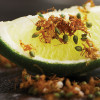
Founded in 2000, the San Francisco World Spirits Competition (SFWSC) is one of the oldest competitions of its kind. Attracting almost 3,000 entries from around the world, it represents an incredible opportunity for renowned distillers to showcase their latest accomplishments and for small-batch producers to gain the recognition they deserve.
Having a medal on your bottle can do wonders for a gin – opening it up to new opportunities and boosting awareness, while securing its spot as an internationally acclaimed tipple.
The judging process
Swirl, sniff, sip, repeat. It’s all in a day’s work for the SFWSC’s panel of industry experts, which includes drinks journalists, spirits retailers and beverage directors. With double-gold, gold, silver and bronze medals up for grabs across a number of gin-themed categories, every entrant wants the pique the interest of the judges’ palates.
With an emphasis on integrity and impartiality, the San Francisco event features a series of blind tastings. From the producer to the price point, judges aren’t told anything about the gins they are tasting and are advised to evaluate each one based on its individual merits. On the final day of the awards – which took place this year on March 15 – the gins that have been awarded double-gold are contenders to be named ‘Best in Category’ and ‘Best in Show’.
Eyes on the prize
Many might describe the SFWSC as the Olympics of gin awards, but there are plenty of other big-hitting competitions in the calendar, such as the recent World Gin Awards (held on February 27).
Covering a range of categories, Four Pillars from the Yarra Valley was named country winner in both the Contemporary Style Gin (for its Spiced Negroni Gin) and Old Tom Gin (for its Experimental Series) categories, while the Country Winner in the Classic Gin category was awarded to Big Tree Distillery’s Elegant Dry Gin. Other gins topping the Aussie charts were Manly Spirits in the London Dry Gin category and, in the Flavoured Gin category, The West Winds Gin’s The Wild Plum gin, with judges’ comments saying: “Rich fruit nose. Lovely rich jammy plum notes come through on the palate with a thick sweetness towards the finish.”
In addition, we all appreciate an Instagram-able gin from time to time, and it seems the judges do too, with South Australia’s Needle & Pin Spirits’ Riverland Dry Gin taking gold at the competition for best label design.
What’s the difference?
Different distillers strive to make different gins, just as different styles lend themselves to different cocktails. If you’re having trouble figuring them all out, the World Gin Awards defines the most common categories as:
Contemporary Style Gin
Gins with flavour profiles where juniper is still discernible, but other flavours such as citrus, spice and floral notes are more prominent than in a Classic Gin.
London Dry Gin
Juniper-forward, traditional-style gins made using the London Dry production technique, which means all flavours must be imparted via distillation, with only water and neutral spirit to be added after distillation.
Classic Gin
Features a clean base spirit with a neutral flavour that allows the distilled flavours of the botanicals to come through. The gin is juniper-forward and other common botanicals include angelica root, coriander seed, orris root and citrus peel.
Old Tom Gin
Produced to replicate the historical style of Old Tom, whether that be botanically intense, sugar-sweetened or botanically sweetened.
Flavoured Gin
Features the addition of fruit or other botanicals, typically via infusion or maceration, and can be sweetened. This category includes flavoured versions of gins from other categories, such as Old Tom.
Matured Gin
Must have been matured in or with wood, including the use of barrels, chips or staves. Many competitions have a specific Barrel-Aged Gin category.
All must be bottled at a minimum of 37.5% ABV.
Tasting tips
Make like a pro and get to know a gin by sampling it neat. Pour your chosen gin into a glass with curved sides as this will capture the fragrance. Having swirled the liquid around the glass to release more of its aroma, it’s time to ‘nose’ the gin by gently sniffing – avoid inhaling too much as it will be overpowering. Take a sip and let the liquid rest on your tongue before swirling it around your mouth – what flavours can you detect? And what flavours linger once you’ve swallowed the gin?
Take your taste test to the next level by placing your hand firmly over the top of the glass and tipping some of the gin into your palm. Cup your hands and smell the spirit from there. In addition, sniffing the back of your hand in between sips will reset your senses.
Aussie award-winners
As one of the most influential competitions out there, we’re thrilled to see several Australian success stories from this year’s San Francisco World Spirits Competition. You can support these home-grown distilleries by adding a few bottles to your wish list.
Double-gold medals are awarded to entries that have received a gold medal rating by all the members of the judging panel and, in this year’s Classic Gin category, that included:
- Poltergeist – Unfiltered Gin, Tasmania
- Adelaide Hills Distillery – 78° Desert Gin, South Australia
- Applewood Distillery – Navy Strength Gin, South Australia
- Never Never Distilling Co. – Triple Juniper Export Strength Gin, South Australia
The latter was ultimately awarded Best in Class in its category. In the Flavoured Gin category, 36 Short picked up double-gold for its Blood Orange Gin, while three distilleries secured gold:
- Laceys Hill Distilling Co. – Lemon Myrtle Dry Gin, Queensland
- Manly Spirits – Lilly Pilly Pink Gin, New South Wales
- The West Winds Gin – The Wild Plum Gin, Margaret River
Share this post:






